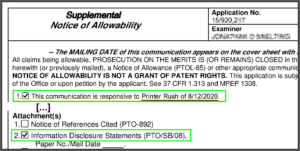In an earlier blog article I wrote about the “Captain May I?” problem. This is the problem that arises if a Hague Agreement filer (the filer of an international design application) designates the US, and if the filer claims priority from a non-US design application, and if the filer relies upon DAS as the way to provide the certified copy of the priority application to the USPTO. In that blog article I described that for two and a half years now, the USPTO has been aware of the fact that Hague filers often use Form DM/1 as a way to provide a priority claim and its DAS access code. USPTO interprets its own 37 CFR § 1.55 in such a way that the electronic copy of the priority application that USPTO retrieves from DAS, using that DAS access code, does not count as a “certified” copy unless the Hague filer also files an Application Data Sheet presenting the priority claim all over again.
It would have been helpful if USPTO had touched up 37 CFR § 1.55 a year ago, or two years ago, or two and a half years ago, to fix the perceived problem in the rule that leads to this otherwise completely unnecessary duplicate presentation of the priority claim. USPTO’s foot-dragging on this has led to an accumulation of two and a half years’ worth of issued US design patents that have a cloud over them if they claim foreign priority and made use of DAS.
Upon a bit of reflection I realize that this “Captain May I?” problem with USPTO’s interpretation of its own 37 CFR § 1.55 can also put a cloud over a US utility patent if it comes from a PCT application. Continue reading “The “Captain May I?” problem can arise in PCT cases too”






